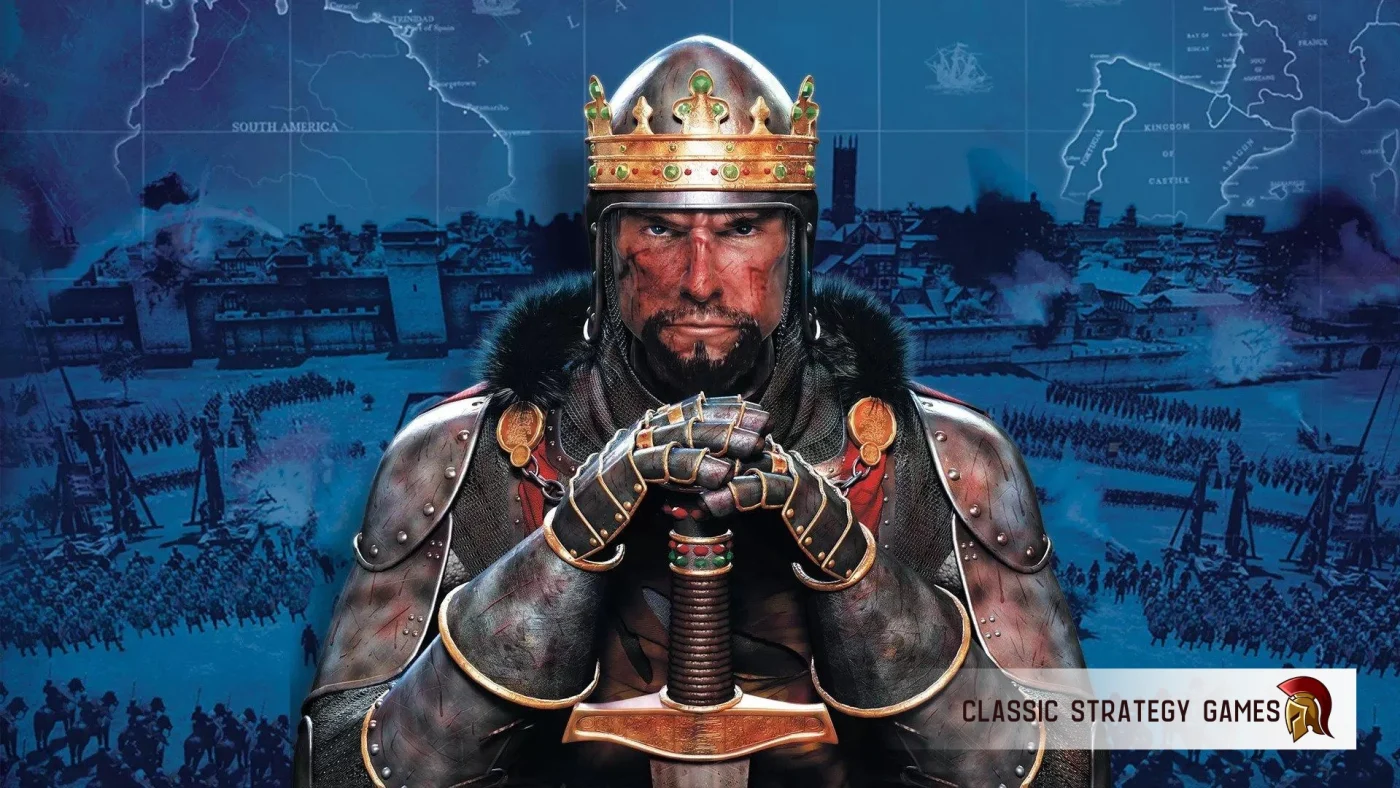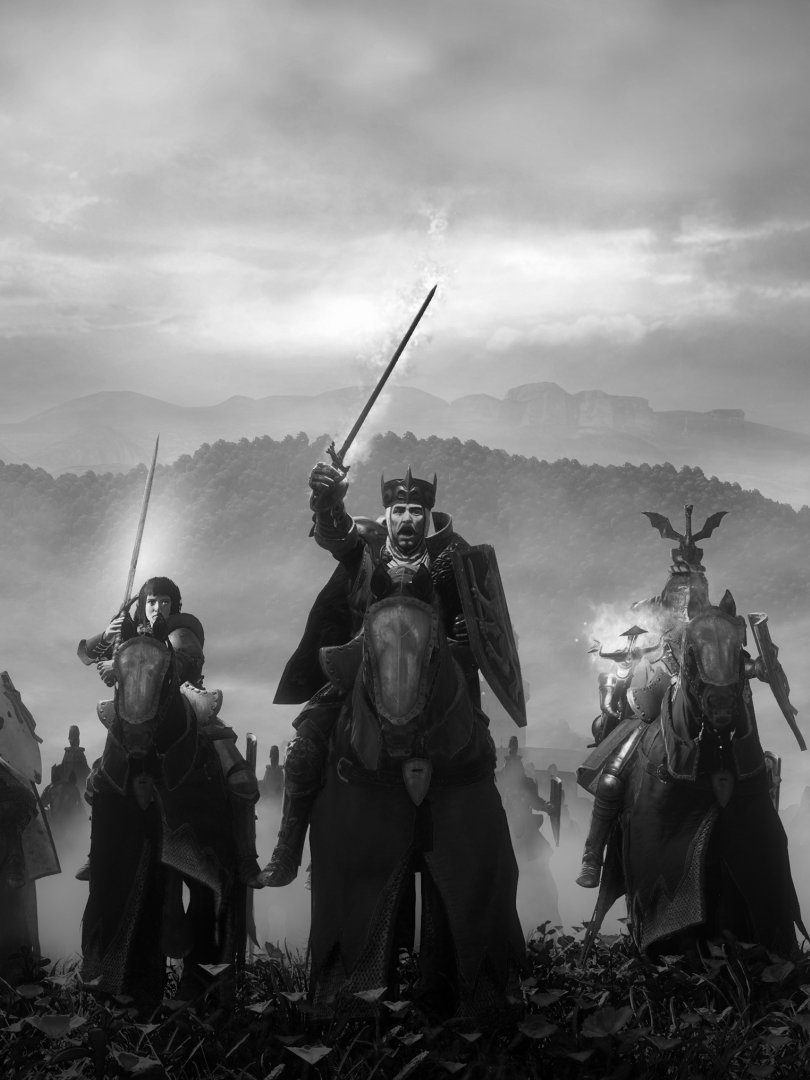When Medieval II: Total War released in 2006, it didn’t just refine the Total War formula – it perfected it. Developed by Creative Assembly, it built upon the foundations of Rome: Total War while delivering a deeper, more polished medieval warfare experience. It remains one of the most beloved entries in the series, praised for its grand campaign, brutal real-time battles, and the sheer scale of its world.
This was Total War at its best – diplomacy, intrigue, empire management, and massive battles all woven into an era defined by knights, castles, and religious conflict. While later games in the series pushed graphics and mechanics further, Medieval II remains a high watermark for fans of historical strategy, largely due to its balance between accessibility and depth, as well as its enduring modding community.
A World of Conquest and Chaos
The grand campaign spanned Europe, North Africa, and the Middle East, covering a period of nearly 500 years from the High Middle Ages to the early Renaissance. Players chose from one of the major medieval powers, each with its own strengths, weaknesses, and unique units. Whether commanding the chivalric knights of England, the disciplined ranks of the Holy Roman Empire, or the relentless horse archers of the Mongols, every faction played differently.
Expansion was the name of the game, but brute force wasn’t the only option. Diplomacy, trade, alliances, and even assassinations played a major role in securing dominance. The Pope held immense influence over Catholic factions, and ignoring his demands could lead to excommunication – a dangerous position that often led to war with other Catholic nations. The Crusades and Jihads introduced dynamic events that could dramatically shift power balances, forcing players to adapt to unexpected challenges.
The game also introduced a deeper system of city and castle management. Cities generated more wealth and diplomatic opportunities, while castles produced better-trained armies. Balancing these two settlement types was key to maintaining both economic stability and military strength.
Real-Time Battles on a Grand Scale
As with all Total War games, the real-time battles were the main attraction. Medieval II took what Rome: Total War introduced and refined it, delivering visually impressive, large-scale battles that felt more cinematic and immersive than ever before. Thousands of soldiers clashed on the battlefield, each behaving according to terrain, morale, and tactical positioning.
Cavalry charges were particularly devastating, with knights smashing into enemy lines and scattering weaker troops. Infantry held formations, archers rained death from above, and siege engines reduced city walls to rubble. The AI, while not perfect, was more competent than in previous games, responding to battlefield conditions with improved logic—flanking when possible, retreating under pressure, and reacting to morale shifts in real-time.
Siege battles were another highlight. Defenders could hold chokepoints, set traps, and rain boiling oil down on invaders, while attackers had to breach multiple layers of fortifications. Capturing a fortress felt like a true test of endurance, requiring careful planning, attrition tactics, and an ability to adapt when the initial plan fell apart.
Naval combat, though present, was still a weak point in the game. Unlike land battles, naval engagements were auto-resolved, limiting strategic depth on the seas. While it was possible to blockade ports and control trade routes, true naval warfare wouldn’t be realized in the series until Empire: Total War.
Religion, Politics, and Subterfuge
Religion played a larger role in Medieval II than in most Total War games. The Papal States acted as a central authority for Catholic factions, dictating alliances, calling for Crusades, and excommunicating rulers who disobeyed the church. Winning the Pope’s favour meant more influence, better relations with Catholic factions, and even the ability to declare holy wars.
For non-Catholic factions, religion worked differently. Islamic factions could call Jihads to reclaim lost territory, while Orthodox Christianity followed its own rules. Religious buildings and priests helped convert populations, reducing unrest in newly conquered territories. Ignoring religion often led to instability, forcing players to either embrace faith or face rebellion.
Agents played a key role in diplomacy and espionage. Diplomats forged alliances and trade agreements, princesses secured political marriages, spies gathered intelligence and sabotaged enemy cities, and assassins could eliminate key figures—sometimes even rival kings or popes. Managing these agents added another layer of strategy, allowing for alternative paths to victory beyond brute military conquest.
Emerging Threats: Mongols, Timurids, and the Americas
Unlike previous Total War games, where the factions remained relatively static, Medieval II introduced dynamic events that shook up the balance of power. The Mongol invasion saw the arrival of highly mobile, devastatingly powerful armies that could carve through unprepared factions. Their cavalry-heavy playstyle forced new defensive tactics, as their hit-and-run attacks could wipe out conventional armies.
Later in the game, the Timurids appeared, bringing war elephants and heavily armoured warriors that required a completely different approach to defeat. Their arrival signalled the late-game challenge, testing whether a player’s empire was truly prepared for a final test of endurance.
For those who survived the medieval chaos long enough, the discovery of the Americas offered a final frontier. While not a core focus, the New World presented opportunities for expansion, introducing Aztec armies and new resources for those willing to make the perilous journey. While it wasn’t as developed as later expansions would make it, this feature hinted at what Empire: Total War would later explore in full.
A Modding Community That Kept It Alive
One of the reasons Medieval II: Total War remains so beloved is its thriving modding scene. The game’s flexible engine allowed for extensive modifications, leading to some of the most impressive strategy game overhauls ever made.
Mods like Stainless Steel improved AI, added factions, and introduced more historical accuracy, making the game even more challenging and immersive. Third Age: Total War transformed the game into a faithful recreation of The Lord of the Rings, featuring Middle-earth factions, custom campaign events, and lore-accurate battle mechanics. Other mods like Europa Barbarorum II and Broken Crescent expanded historical depth, offering players completely new ways to experience medieval warfare.
This modding support gave Medieval II unprecedented longevity. Even today, nearly two decades after its release, it remains one of the most played Total War games, thanks to these community-driven expansions.
Why Medieval II Still Stands Out
Medieval II: Total War holds a special place in the Total War series. It hit the perfect balance between depth and accessibility, offering large-scale battles, meaningful diplomacy, and dynamic world events that kept campaigns engaging from start to finish. Later games in the series refined mechanics further, but many argue that Medieval II captured the essence of grand strategy in a way few others have.
For those who love the medieval era, with its feudal rivalries, religious conflicts, and brutal warfare, Medieval II remains the ultimate Total War experience. The combination of strong core mechanics, an active modding scene, and an era rich with conflict makes it a strategy game that has stood the test of time. It was never just about conquest – it was about managing an empire that could withstand not only its enemies but also the shifting tides of history itself.


